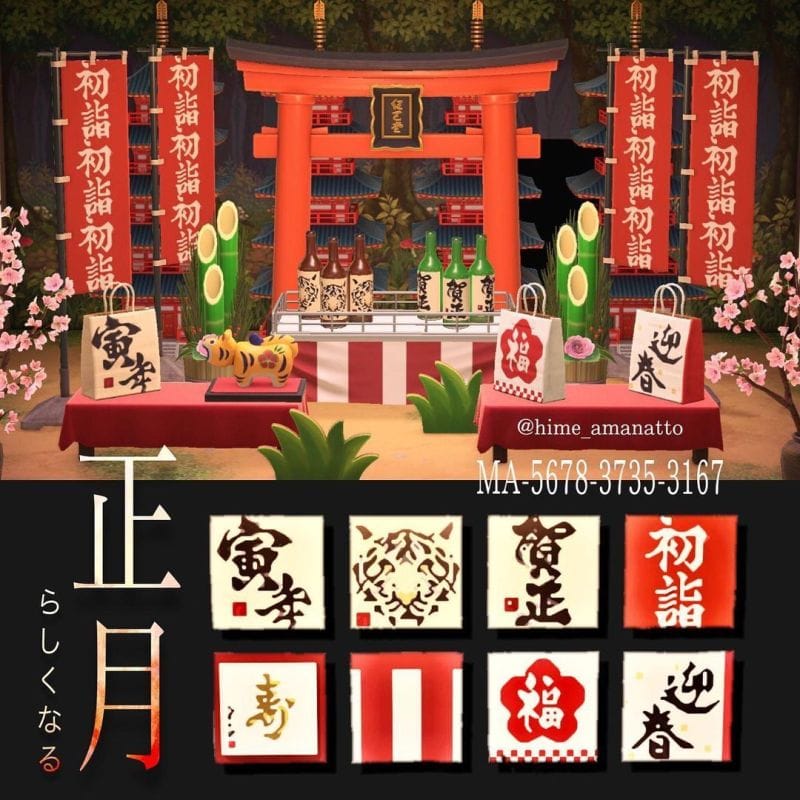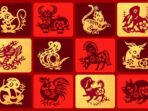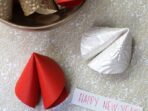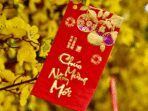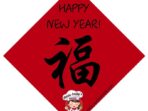Lunar New Year Japanese – Every time I miss, a brief visit to Yokohama Chinatown is all that is needed to feel a bit quiet. In 1859, Yokohama was one of the first Japanese ports to open foreign trade. Chinatown developed quickly to accommodate many Chinese merchants who settled in this city. Of course, there has been a lot of time and lately there are more businesses than people who really live here.
Street food rarely occurs in most places in Japan, but in Chinatown, they are everywhere. This also serves greatly to the Japanese sky. You cannot escape the tenderness of the tenderness of this country.
Lunar New Year Japanese

Ten years have passed since I celebrated the Chinese New Year and this year I had to deliver the year of a rooster with a British-Chino friend I did in Taiwan. Of course, it is not magnificent and luxurious as the Chinese New Year in Singapore, but … expatriates with what we can.
Japanese Concept: Over 257,952 Royalty-free Licensable Stock Illustrations & Drawings
We went to Palem’s reader, making our Tarot letter read and then eat enough to feed the troops. I love love Tabehodai everything you can eat in Yokohama. This is one of the few things on the tourist route that I like repeatedly.
By the way, if you ask questions why a brown girl as I celebrates the Chinese New Year, see this publication: it grows in two old cultures in new countries.
Happy Chinese New Year, Friends. Here I hope that the year of the rooster is a good year for all of us 🙂
Sanatani Dipa. Illuminating author, a thousand names, prophet Dharma, Shiva Heart, Small Light and Story Trader. Singapore Twinn Swan’s book editor starts weeks before, when people rushes to clean and decorate the house, prepare special food, celebrate parties and write congratulations. Many companies are close for several days, while family and friends meet to sound in the new year on January 1. When Japanese neighbors in Asia began their own New Year celebration at the end of January or February, the celebration in Japan was over for a long time.
A Japanese Police Officer Stands Next To Colourful Lanterns During The Chinese Spring Festival Yokohama China Town, Kanagawa. Traditional Chinese Cultural Events To Mark The Lunar New Year Will Happen In Yokohama’s China Town From January 22nd To
Japan is one of the east countries that does not celebrate the Chinese New Year, one of the world’s largest celebrations. These great vacations are known as many names (spring festivals in China, Seollal in Korea, Tsagan Sar in Mongolia, Tết in Vietnam) and observed in several forms or forms of continental China, Taiwan, Singapore, Malaysia, Indonesia, Korea, Vietnam , And Mongolia has not yet been qualified by China, Korea and Vietnam worldwide.
The Chinese lunisolar calendar was introduced in Japan in the sevent Second second two two two celebrated the two two two two two two two two two two two two two two two two two two two months follow the turning point of the winter sun. So what has changed?
In 1873, as part of the restoration of Meiji, Japan adopted the Gregorian calendar to put the country in line with the West. At that time, the attitude that applies among many Japanese elites is that Asian practices are lower than the western ones and will keep Japan unless they are abandoned.
But when the Meiji government decided to adopt the Gregorian calendar, they only confiscated the lunisolar calendar event to a new calendar instead of changing the date correctly. Thus,
Top Locations For Celebrating Lunar New Year
The first day of the year lunisolar calendar, it falls on January 1, the first day of the Gregorian calendar year, creating a single month delay between New Year’s Japanese and neighbors such as China and Korea celebrations.
On the contrary, China adopted a double calendar policy in 1912, where the Gregorian calendar for all was used, except to determine traditional holidays, which were organized according to the Chinese lunisolar calendar. At present, Continental, Taiwan, Singapore, Malaysia, Indonesia and Vietnam use similar systems.
The decision that eliminated the lunisolar calendar was issued so that it was suddenly so that the general public could fight to prepare for the New Year. According to the author Asano Baidō (1816-1880), “there is no time to make rice cakes at the end of the year, so people have to buy New Year’s rice cakes in the rice pastel store. Some people install
[Traditional decoration made of bamboo and pine] The second day of the twelfth month and some did not installed it at all … “
Yokohama, Japan. 21st Jan, 2023. Yokohama Chinatown Is Crowded With People As Chinese Lunar New Year Will Start From January 22 In Yokohama, Suburban Tokyo On Saturday, January 21, 2023. People Celebrate
Initially, the opposition to change was strong, and many people continued to celebrate the Chinese New Year until the twentieth century, especially in rural areas. However, finally, the lunisolar calendar faded completely from everyday life in Japan.
That is, almost completely. Today, there are still traces of Japanese Chinese New Year celebrations, if you know where to look for.
) Initially written as 三十 (30), referring to the last day of the lunisolar moon (usually 30), and 大 (

) Shows that this is the last day of this month for this year. So today, despite the fact that the New Year’s Eve is always celebrated on December 31, vacations are still known as the “thirty days”!
Vietnamese Lunar New Year Festival To Be Held In Japan
It always coincided with the first full moon of the New Year, falling on the same day as the Chinese Linder Festival. Historically, it was a day to pray for abundant crops. For breakfast, it is used to eat 小豆粥 (
), Rice porridge with sweet Azuki beans. The prediction ritual is carried out by placing a bamboo cylinder in the remaining porridge and leaving it last night. The more rice trapped in the cylinder the next morning, the better the harvest of that year will be.
Also the day the decoration of the New Year was revealed, and in some places, the decorations used were burned in a special bonfire.
年賀状 (Nengajō) is a New Year congratulation card sent to friends, family, teachers and colleagues, and sent by mail on January 1. Japanese publications still obtain around 3 billion Nengajō every year, although this number decreases with the digitalization of this new card.
Japan New Year 2025 Stock Illustrations
Although the Japanese New Year no longer coincides with the Chinese spring festival, Japan still uses a 12 -year -old zodiac that is very similar to Chinese zodiac, and many Nengajō show the animals of the New Year Zodiac. In 2019, Japan will celebrate the year of wild boar.
To enter the spirit of the New Year, why not celebrate sending your own Nengajō? Write your new year greetings, your date and sign at the front of the postcard, and do not forget to enter your address and the address of the recipient in the back. If you don’t want to do yours, you can download one of our postcards that have been made before! For about 450 years, the kingdom of Ryūkyū, which was marketed with Japan, China and Southeast Asia; Its influence contributes to the unique development of Okinawa culture. The customs of the lunar new year gradually dying on the main island, but many small islands continued in the Okinawa chain. Kuroiwa Masakazu, a photographer who has made a race photographing the life of the island, captures a traditional ceremony image that was transmitted from generation to generation and observed until today.
Kudakajima is about 5 kilometers east of Cape Chinen, at the southeast end of the main island of Okinawa. The small island, only 8 kilometers around it, has been called “The Island of Dewa”, because it should be where the God of the creation of Ryūkyū, Amamikiyo, descending to the earth and began to build a nation. That’s where the secret ritual is called

In the new lunar year, the island residents who wear formal clothing, national flags that fly in the community center and fishing boats rise
Lunar New Year
, banners to pray for abundant catches. The entire island celebrates the arrival of the New Year, and everyone goes to Fukamadun, the sacred place where the Shakutui ceremony takes place to pray for good health in next year.
In addition to Fukamadun, the site of the ceremony, this island has a second sacred place called Udunmyā. For Shakutui, a couple of men rose to one site, where they used a ceremony boat to exchange sake glasses under the view of a woman who represented the God. Other couples waiting for their turn to meet in the store where they drink and meet. Many residents of the island who return to the Chinese New Year, and the mound of empty sake bottles only grow higher when the hours passed.
Once the people who have finished making Shakutui rites emerged from a sacred site, expressed their joy for the arrival of the new year dancing the dance of Okinawa celebration known as
. Others joined when the atmosphere became more fever, and in the end the dance circle resembled encouraging disturbances.
What Is Lunar New Year And How Is It Celebrated?
Harahigajima, the site of the cave where Amamichail (Dewi Amamikiyo) and Shirumichū (God Shinerikiyo) live and where is the tomb of Amamichū, called “the island where the gods live.” Lying east of the Yokatsu Peninsula off the east coast of the main island, you can reach Hamahigajima by car through a bridge that connects Okinawa with Henzajima and then Hamahigajima to the south from there.
The cave where the gods and women live

